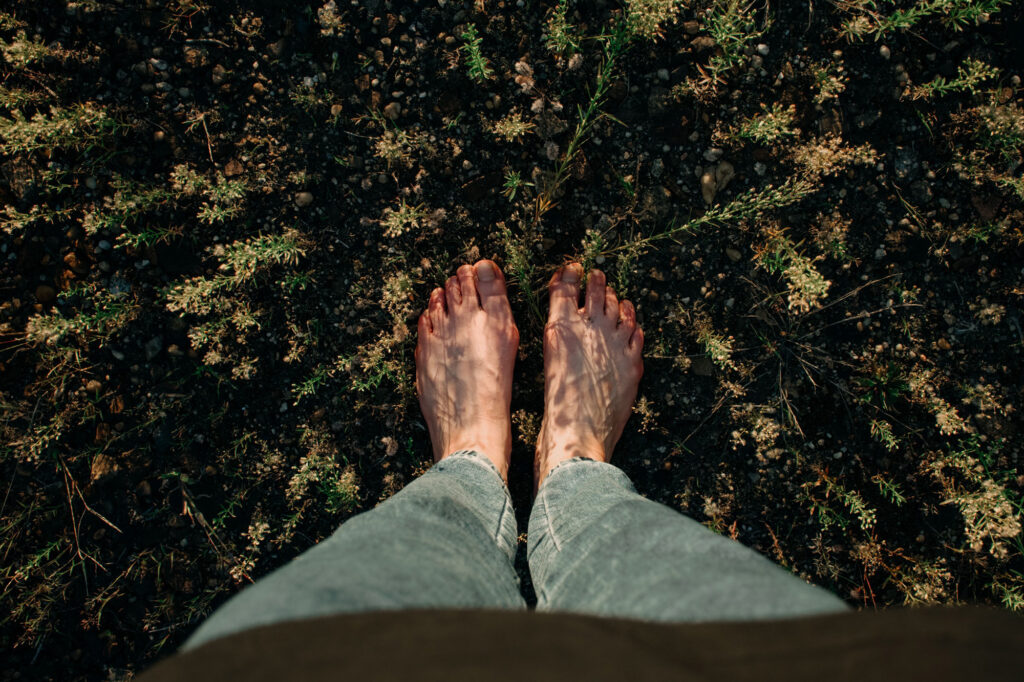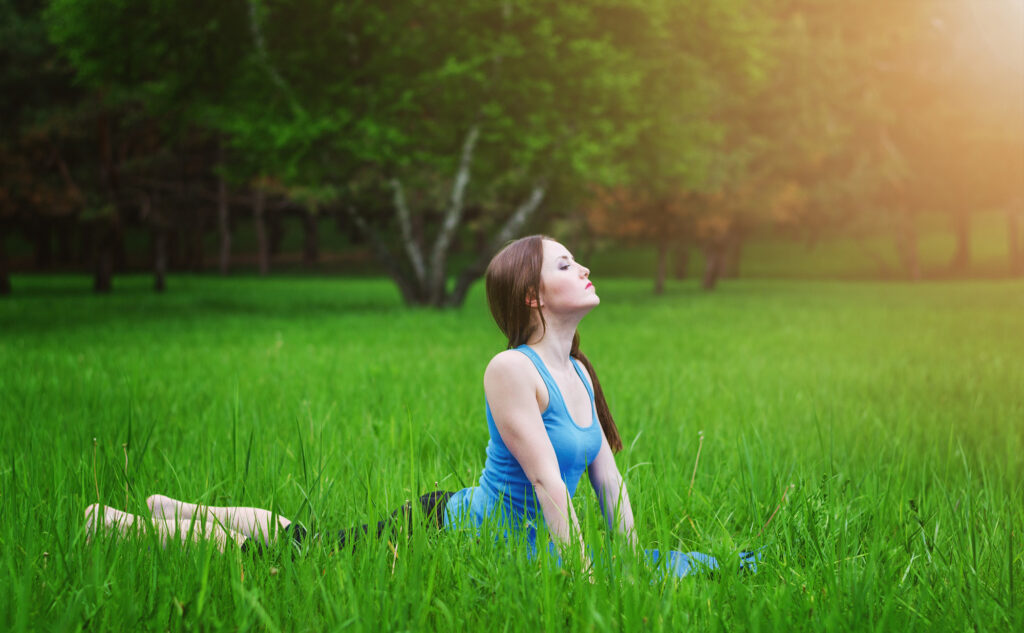Stress reduction is a money-making business. In fact, “the average American was found to spend $960 annually directly on trying to feel less stressed.” (New York Post). That equates to billions of dollars per year for those selling self-help books, videos, instructional classes, calming accessories, and now even apps – all with flashy commercial promises to help reduce stress. Yet, many times the tools we need are right at our fingertips, often free or less expensive and have greater results. It doesn’t have to cost a fortune to bring the mind and body into a harmonious and calm state. For example, there are:
- Mental exercises: breathing exercises, therapy, meditation, mindfulness (MBSR), journaling
- Physical exercises: yoga, Pilates, stretching, walking in nature,
- Supplements & Herbs: pharmaceuticals, vitamins, supplements, herbal remedies, teas, juices, aromatherapy, and specialized diets
All of the above can contribute to a calmer, healthier and emotional stable life. If you have already come to see how meditation and mindfulness can reduce stress, increase wellbeing, or expand spiritual growth, you may be interested learn more about Earthing (also called grounding). Although it may sound like a new trend, earthing has been around as long as the earth. What is it, how does it work, are there risks, and what are the benefits?
What is Earthing?
First, off the term Earthing can also be called Grounding or Barefoot Healing. Earthing means to sync the body to the natural rhythms of the earth. Earthing is the process of placing your body in direct contact with the ground (why it’s also called grounding) by standing barefoot on the grass, sand, soil, in water, or even concrete, with the intentional purpose to achieve health benefits, calm, and mindfulness.

Where does the energy come from? There are billions of free electrons in the earth, which is generated by thousands of lightning strikes, solar radiation, and deep energy generated from the inner core of the planet. The electrical intensity varies with the rise and setting of the sun. And while ancient civilizations knew nothing about electrons, they knew the Earth had healing energy power, including Qi (Chinese) and prana (Indian) that embody this idea.
“Grounding, or earthing, is a therapeutic technique that involves doing activities that “ground” or electrically reconnect you to the earth. This practice relies on earthing science and grounding physics to explain how electrical charges from the earth can have positive effects on your body. This type of grounding therapy isn’t entirely the same as the technique that is used in mental health treatment.” – Healthline.com
Like an electronic device needs to be directly connected to a battery to charge, the body needs to be regularly and consistently connected to the earth, our battery for life. Some examples of earthing can include:
- walking barefoot outside,
- lying on the ground
- submerging in bodies of water
- sitting, working, or sleeping indoors connected to conductive systems that transfer the Earth’s electrons from the ground into the body
- sitting or lying on grounding mats or sheets.
What is the Origin of Earthing?
What is the origin of Earthing? Although walking or running barefoot in the grass seems to be as natural and organic as being human, the intentional physical contact with the ground for emotional and mental wellbeing dates back to the ancient civilizations of the Greeks, Romans and Egyptians. In traditional Chinese and Eastern medicines, earthing was also recognized in regards to the energy or natural forces that abound in the earth. Accordingly, the earth’s energy can balance the body’s energy for health and wellness benefits. They call it “earthing qi” or “grounding qi.”
In traditional Eastern meditation throughout the centuries, many practitioners would have used grounding during their meditations, while sitting on the ground or animal skins allowing transference of the Earth’s grounding energy. From this standpoint, meditation and grounding is truly a timeless, tandem concept.
This concept behind earth’s natural energies were also found in the 19th century, with European doctor Louis Kuhne, who published The New Science of Healing. That publication stated in 1896 that it was recommended for people to “walk barefoot outdoors” and return to nature for improved mood. In the 1930’s, Dr. George Starr White, a medical doctor, began researching the process of sleeping connected to copper wires affixed to home pipes, for improved sleep quality.
What are some studies regarding Earthing?
“Grounding appears to improve sleep, normalize the day–night cortisol rhythm, reduce pain, reduce stress, shift the autonomic nervous system from sympathetic toward parasympathetic activation, increase heart rate variability, speed wound healing, and reduce blood viscosity.”
– NIH (Published online 2015 Mar 24.)
“In multiple studies, grounding has been documented to have profound beneficial effects on physiological and emotional stress. Grounding includes a normalizing influence on cortisol, a calming impact on the electrical activity of the brain, and a normalization of muscular tension. In addition, there is an improved response to trauma and tissue injuries with accelerated wound healing.”
NIH (Published online 2022 Dec 15.)
“Some 20 studies to date have reported intriguing evidence of wide and significant physiological improvements when the body is grounded vs. non-grounded. The research, along with numerous anecdotal reports, demonstrates that Earthing clearly deserves inclusion in the clinical practice of preventive, alternative, and lifestyle medicine and has great potential to render these approaches more effective.”
– Science Direct (May 2022)
“Earthing is about having direct skin contact with the surface of the Earth, whether it’s your bare feet, your hands or other parts of your body. The theory is that when we physically connect with the ground, its electrical energy rebalances our own. Proponents believe that the rise in chronic illnesses can be attributed, in part, to our footwear. They point out that we’ve just recently started wearing shoes with rubber soles, which don’t conduct electricity. So, part of the argument is that we’ve removed that contact from the Earth, which is making us unwell.”
– Susan Albers, PsyD, Psychologist at Cleveland Clinic
What is the Process of Earthing?

Similar to any other self-care technique, the challenge is taking the time out of your day, each week and month consistently to prioritize your mind and body over the unending list of duties and chores. Make time even a few minutes a day to reconnect with the earth. Considering the weather, dress appropriately but wear shoes that allow for grounding. (There are grounding-compliant moccasins, sneakers, clogs and flip-flops in all price ranges.) Here are some ideas how to ‘reconnect’ with the earth:
Take a Walk
Get outside and go for a walk, either alone, with your dog or a friend or loved one. Find safe spaces where you can walk on the grass, the sand or even the mud. Intentionally walk with the idea of calming down, recharging your internal battery, and absorbing the earth’s energy. Be careful where you walk with bare feet, look out for sharp objects or broekn glass if you are in a public park or space.
Play in the Dirt
Get your hands and your feet in the dirt. A great way to connect with the earth with all four limbs is literally digging into the earth, moving dirt, weeding, planting and gardening. If you are an apartment dweller, you can buy some soil, plats and planters to create a garden on or your porch or patio, or even your windowsill.
Invest in a Grounding Mat
When it’s impossible to get outside, whether it’s because of weather, location or inaccessibility to grassy spaces, invest in a grounding mat. Prices for ground mats range from $50 to $150 on Amazon.
*How do ground mats work? The earth’s surface has a negative electric charge, and when it comes in contact with human tissue, there is an equalization. The body can take on extra electrons and build up a static electric charge. A grounding mat mimics the electric current of the earth and allows a person to bring the experience into a home or office. Most of the biochemical reactions in the body involve electron transfer.
Are there any risks or issues you need to consider when it comes to earthing?
If you are walking barefoot on the ground, there are risks of getting cut or injured by sharp objects, as well as getting bitten by an insect. But as long as you watch where you walk, Earthing poses no other serious concerns. When you are dealing with any kind of physical, mental or emotional health issue, always consult your doctor or physician before starting any new therapy.
What are the benefits of Earthing
There are so many resources (from wholistic and traditional medical backgrounds) that state Earthing is proven to positively impact your mental health, physical health, and emotional wellbeing, as well as claim to heal existing disease. Here is a list of some of those benefits.

- Reducing inflammation: Earthing provides the body with negatively charged electrons, which neutralize the free radicals from radiation
- Reducing pain, including chronic pain
- Regulate cortisol levels
- Protecting the body from disruptive electromagnetic fields (EMF)
- Reducing jet lag
- Reduce stress: Grounding prevents oxidative stress by lowering cortisol to an acceptable level.
- Improving blood flow
- Restoring energy
- Improving sleep: With reduced cortisol levels, sleep time can become more relaxing and therapeutic.
- Faster wound healing
- Regulating immunity
- Improving mood
- Reducing blood viscosity (lowering risk of blood clots)
- Regulating the nervous system: Earthing shifts the autonomic nervous system from sympathetic toward parasympathetic activation,
- Increase heart rate variability,
- Speed wound healing
- Reduce Anxiety and depression. In one study, it was shown that even 1 hour of grounding therapy can significantly improve mood.
An added benefit is that you can utilize the time you’ve reserved for your daily grounding or earthing session to integrate your MBSR (mindfulness) exercises at the same time. Since MBSR’s benefits of calming and stress reduction are enhanced by being outdoors, consider the added benefit of grounding at the same time. There is no reason you cannot kill two birds with one stone, as they say. Earthing can significantly improve the quality of one’s meditation and MBSR sessions.
For example: While you are practicing your breathing, be mindful of how the grass (or dirt, sand or water) feels beneath your feet. How does being connected with the earth soothe you, energize you, heal you? Focus on the energy being absorbed and take deep breaths to allow that energy to penetrate every cell of your body, from toes to feet to legs to torso to neck, head, shoulders and arms … right out your fingertips. Visualize the path of the energy throughout your body and welcome the positive impact.
For more information on MBSR, please look into our 8-week training course that we host several times per year. Our next course starts on May 8, 2024 …
Have you tried Earthing and experienced its benefits? We’d love to hear your story by commenting on our social media or sending us an email or comment on the form below.








